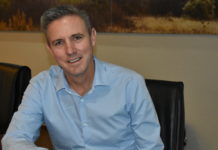
[miningmx.com] — ONE of the chief criticisms of Harmony Gold during the last two years is that the company was losing key staff leaving CEO, Bernard Swanepoel, increasingly isolated.
Perhaps that accounted for the extraordinary volatility in the company’s quarter-on-quarter performances, and changeability in strategy, say the critics. There’s doubtless an element of truth in this. Swanepoel has lost important people: experienced hands like Ferdi Dippenaar and Ted Grobicki to new talent, such as his new business general manager, the 35-year old De Wet Schutte.
Quarterly performances have bounced around. Strategy has seen Swanepoel raise the prospect and then ditch an offshore listing for his new Papua New Guinea mines, a separate listing for his marginal mines in South Africa as well as his failure to capture South Deep. It’s been difficult to gauge where Harmony is going, an all-at-sea diagnosis one traces from the bid for Gold Fields.
But there’s a chance Swanepoel is busy reclaiming some of his old brio.
The decision to sell the Orkney shafts to Pamodzi Gold, and plans to sell others on a tribute basis; the perseverence in independently developing the Wafi/Golpu project in PNG; and an interest in developing the company’s gold and uranium slimes show Swanepoel is fixing his own house first rather than chasing expansive corporate goals.
He’s also attracting talent back into the fold. Cathie Markus, formerly executive director of Impala Platinum, has joined the board of Harmony Gold as a non-executive director. Georges Lequime, a gold analyst for RBC Capital Markets, will lead Harmony’s strategy to sell its high-cost marginal shafts.
The company also has vastly improved cash flow, the best in three years, according to JP Morgan analyst, Steve Shepherd. In fact, Harmony’s finances across the board are improved. Swanepoel mentions the company has “the laziest balance sheet in the industry” and with that come plans to raise a R1.5bn to R2bn corporate bond ahead of heavy capital investment.
This is all good news. The capital will be pumped into Wafi, one of several new projects representing fresh, higher quality ounces to replace the old ounces Lequime will usher through the door. But a raft of long-standing projects are also coming to account, including the Phakisa shaft, Doornkop South Reef, the Tshepong North decline. About R2.1bn has been spent on these projects to date, but there’s another R413m planned for the June quarter alone.
And then there’s the uranium prospects that Swanpoel says embarrass him; embarrass because it’s taken so long for him to grasp the nettle (his admission). “Five years ago, fund managers in Boston were saying this uranium thing was going to explode. I am embarrassed about joining the party too late,” he says.
But not very embarrassed, not really: Swanepoel is more entrepreneur than manager and is at his best when talking about how he intends to grow his company, uranium included. At the March quarter results presentation in Johannesburg last week, he was back to his lively best.
The share has run hard, however and analysts are chary of recommending it. Fund managers are also cautious. They didn’t applaud the strategy to sell marginal ounces but wanted Swanepoel to focus on making profitable existing mines.
One suspects this will remain the point over which credibility will revolve in the short-term.











